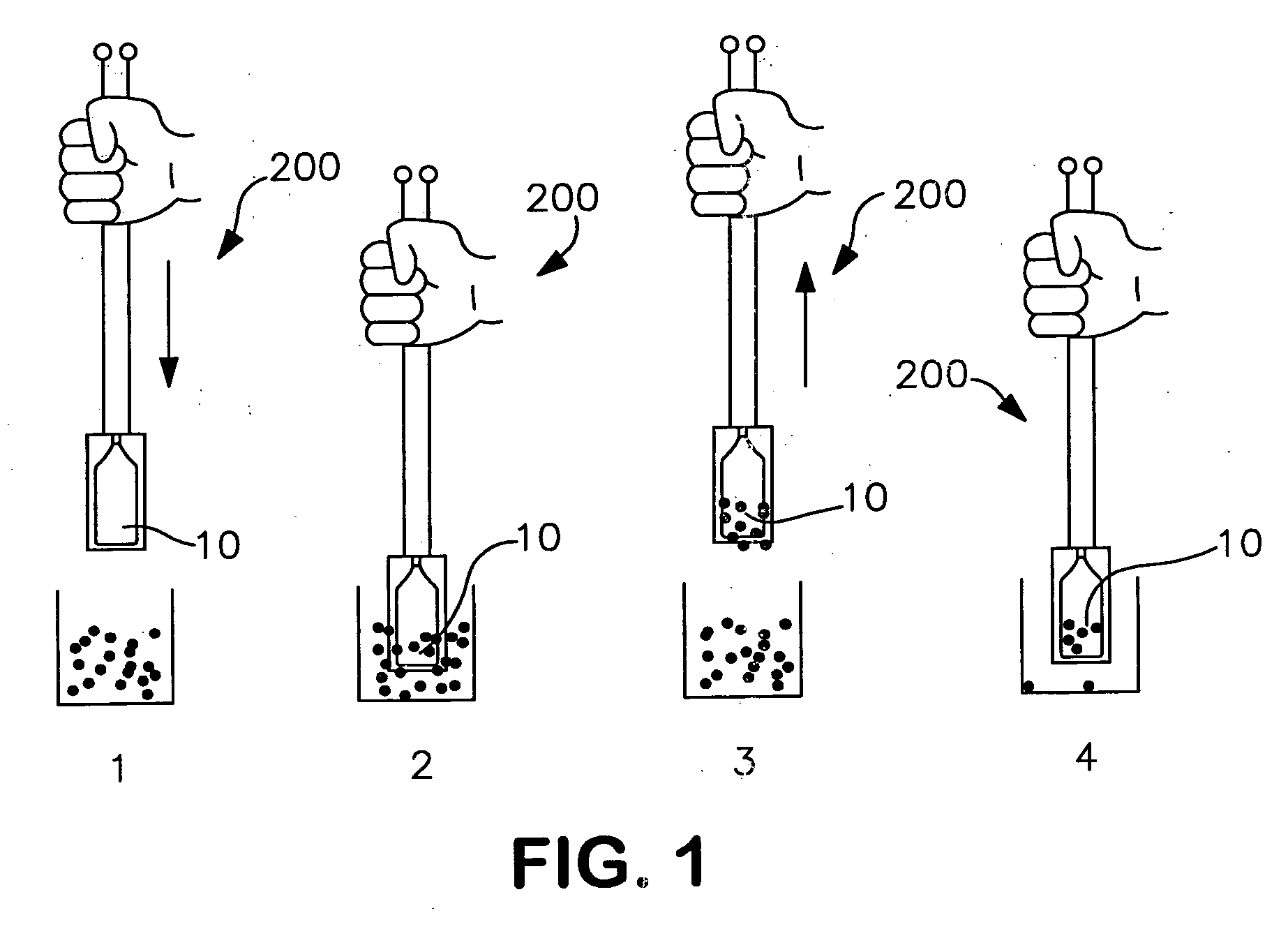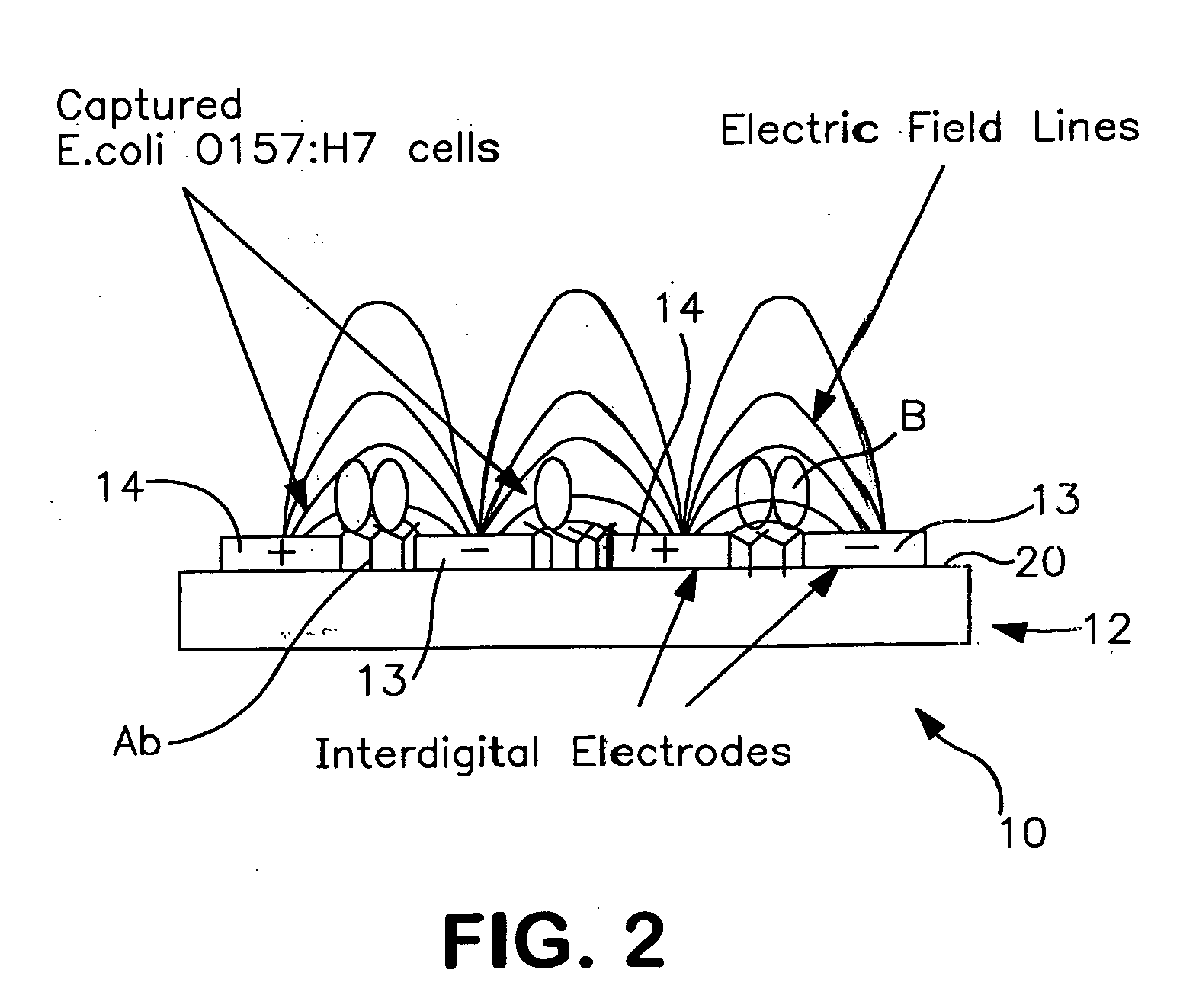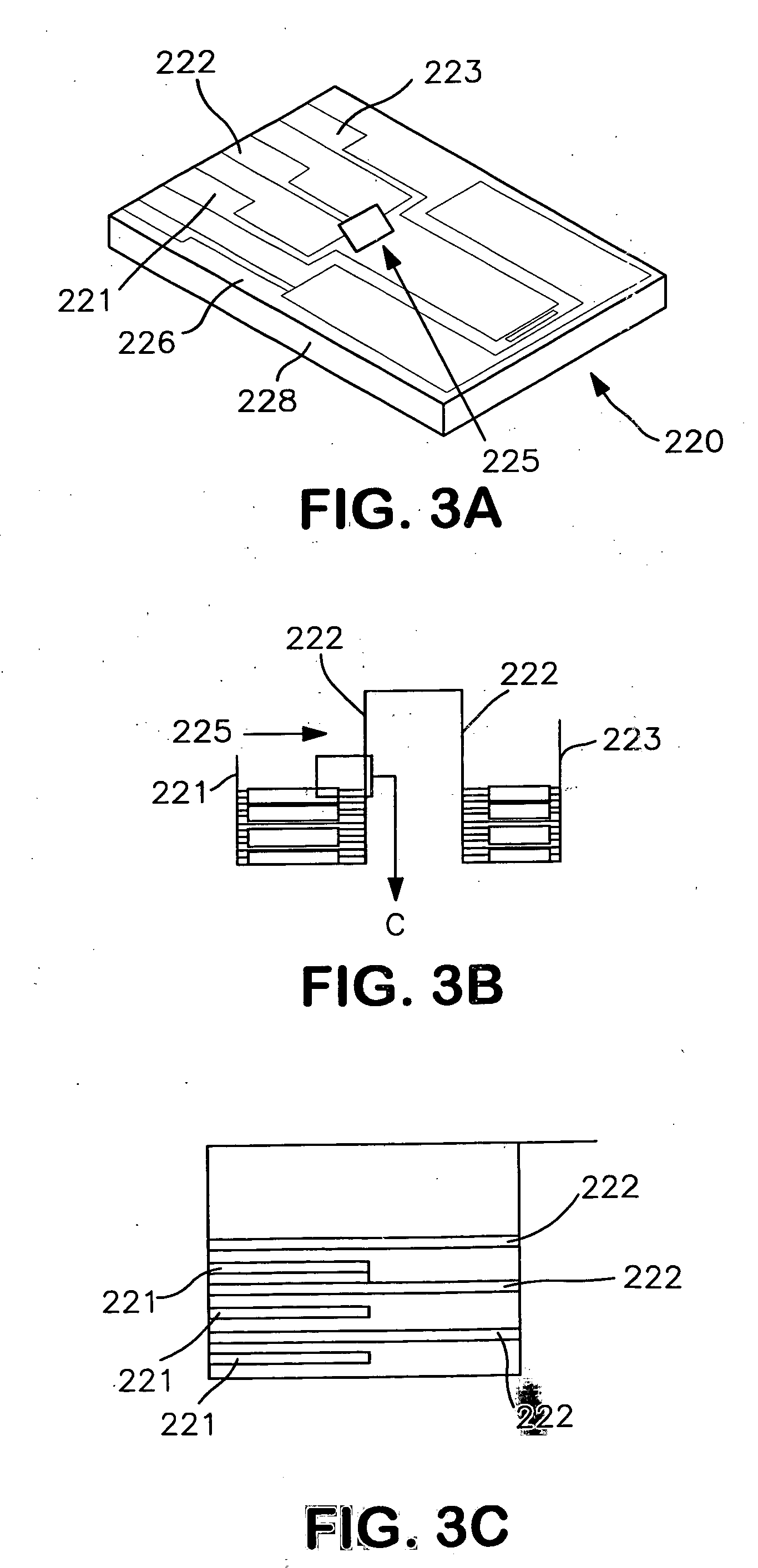Impedimetric biosensor and its use for rapid detection of bacterial pathogens in solution
a biosensor and impedimetric technology, applied in the direction of liquid/fluent solid measurement, instruments, electrochemical variables, etc., can solve the problems of inconvenient monitoring on-site, high cost, and high cost of construction, and achieve the effect of reliable and inexpensive construction
- Summary
- Abstract
- Description
- Claims
- Application Information
AI Technical Summary
Benefits of technology
Problems solved by technology
Method used
Image
Examples
example 1
[0108] A biosensor is constructed as follows. A 4 inch (100 mm) diameter silicon wafer with 100 crystal orientation serves as the foundation. Then 2 μm of silicon oxide is grown over the silicon to act as an insulator. Next, photoresist (PR) is spun onto the wafer which is then exposed to UV radiation through a photomask containing the electrode pattern. Afterwards, the PR is developed in the pattern of the photomask.
[0109] Next, 30 nm of titanium followed by 50 nm of gold is deposited onto the wafer to form an interdigitated electrode structure, followed by removal of the PR. The wafer is then diced into 8 mm×12 mm chips.
[0110] Antibodies are attached to the silicon surface of the chips as follows. The silicon surface is cleaned by immersing the chip into a mixture of hydrochloric acid and methanol for 30 minutes, and then in sulfuric acid for 30 minutes, followed by rinsing in distilled H2O. The chip is then immersed in a silanizing solution of 3-mercaptomethyldimethylethoxysila...
example 2
[0112] A prototype apparatus comprising a biosensor was fabricated and tested for ability to detect E. coli O157:H7 in a large sample volume.
[0113] The biosensor was fabricated from a 100 Silicon wafer with a 2 μm layer of SiO2 as an insulating layer. The biosensor active area contained interdigital gold electrodes deposited over the SiO2 using photolithographic processing methods. Analyte specific antibodies were immobilized to the SiO2 in between the electrodes creating a biological sensing surface. Using impedance spectroscopy, the impedance across the interdigital electrodes was measured after immersing the biosensor in solution. Bacteria cells present in solution attached to antibodies and became tethered to the biosensor surface. Immobilized bacteria cells changed the dielectric constant and thus the capacitance, and the resistance of the media between the electrodes thereby causing a change in measured impedance. The biosensor was able to discriminate between different cellu...
PUM
| Property | Measurement | Unit |
|---|---|---|
| Length | aaaaa | aaaaa |
| Size | aaaaa | aaaaa |
| Width | aaaaa | aaaaa |
Abstract
Description
Claims
Application Information
 Login to View More
Login to View More - R&D
- Intellectual Property
- Life Sciences
- Materials
- Tech Scout
- Unparalleled Data Quality
- Higher Quality Content
- 60% Fewer Hallucinations
Browse by: Latest US Patents, China's latest patents, Technical Efficacy Thesaurus, Application Domain, Technology Topic, Popular Technical Reports.
© 2025 PatSnap. All rights reserved.Legal|Privacy policy|Modern Slavery Act Transparency Statement|Sitemap|About US| Contact US: help@patsnap.com



